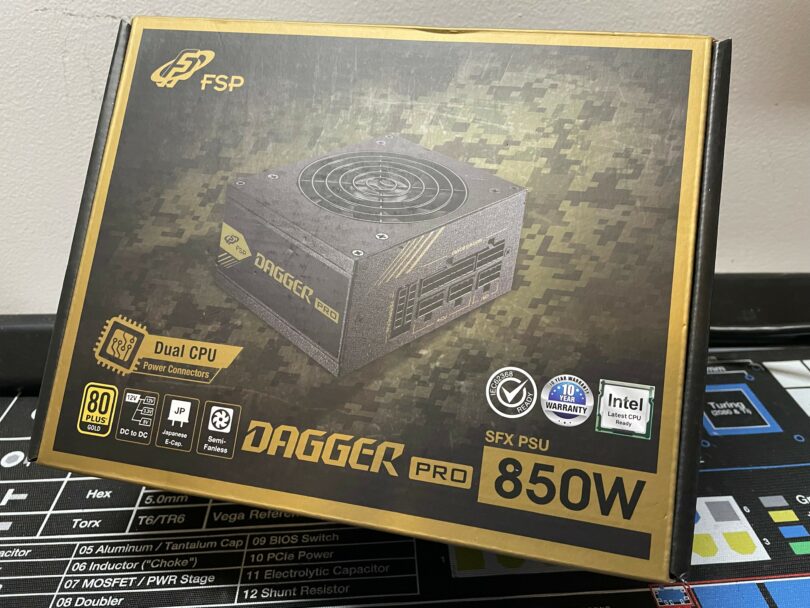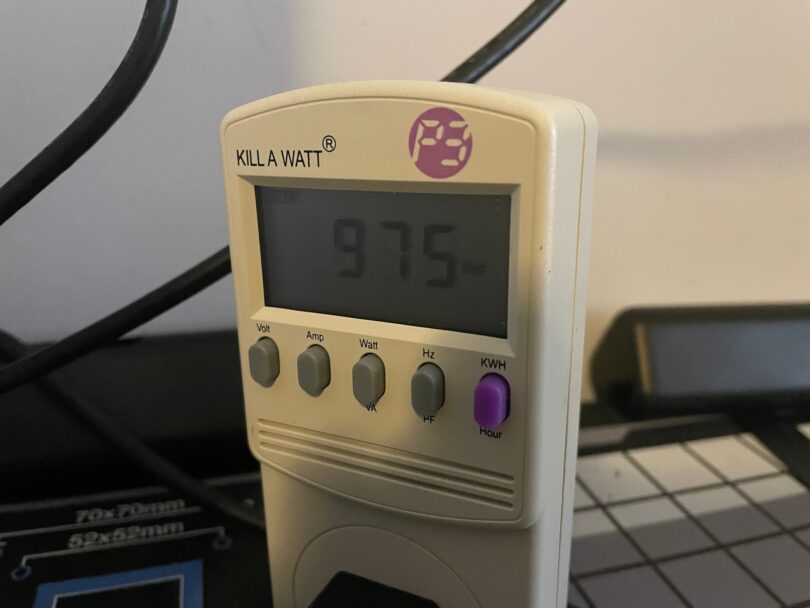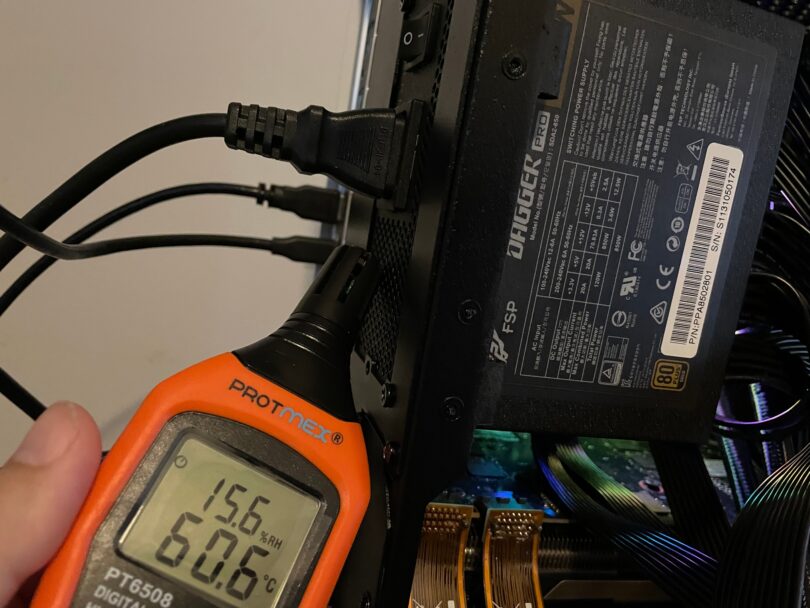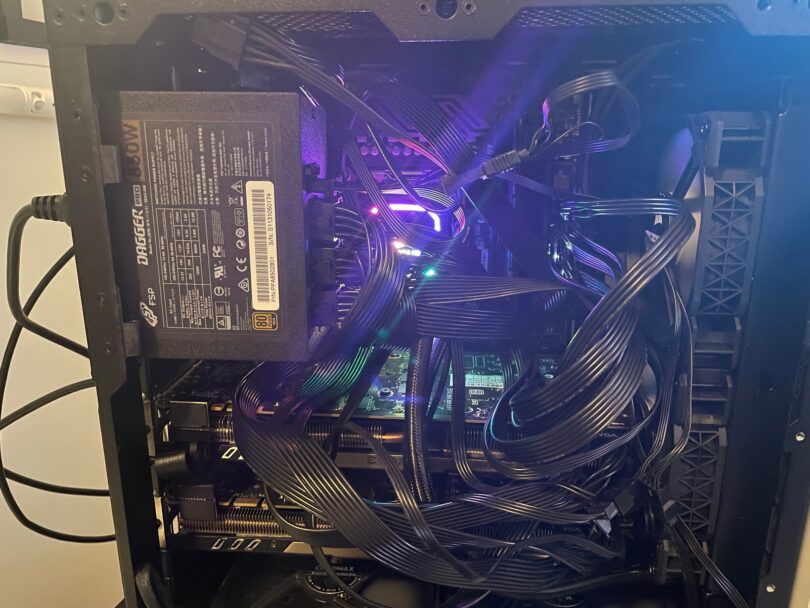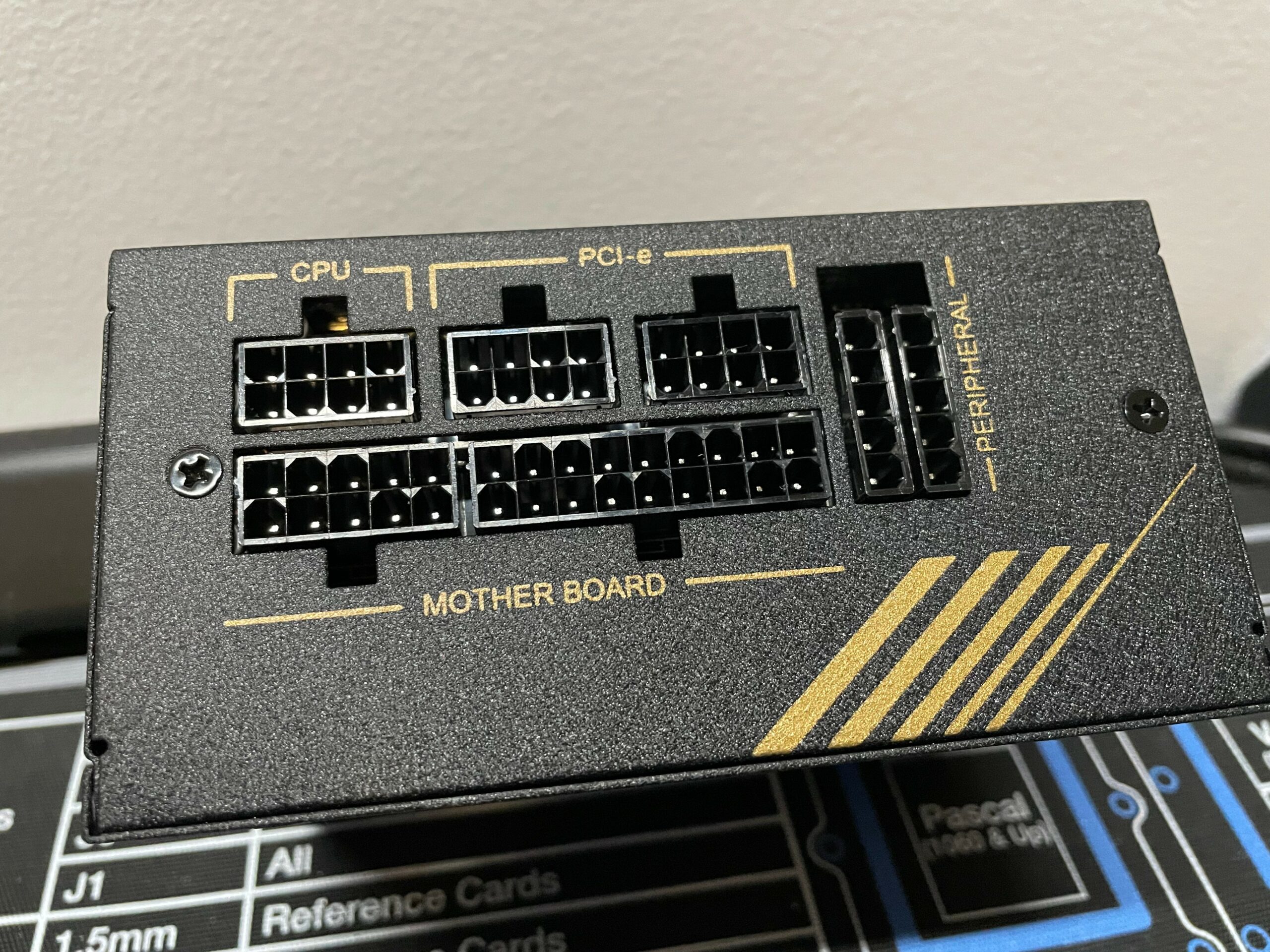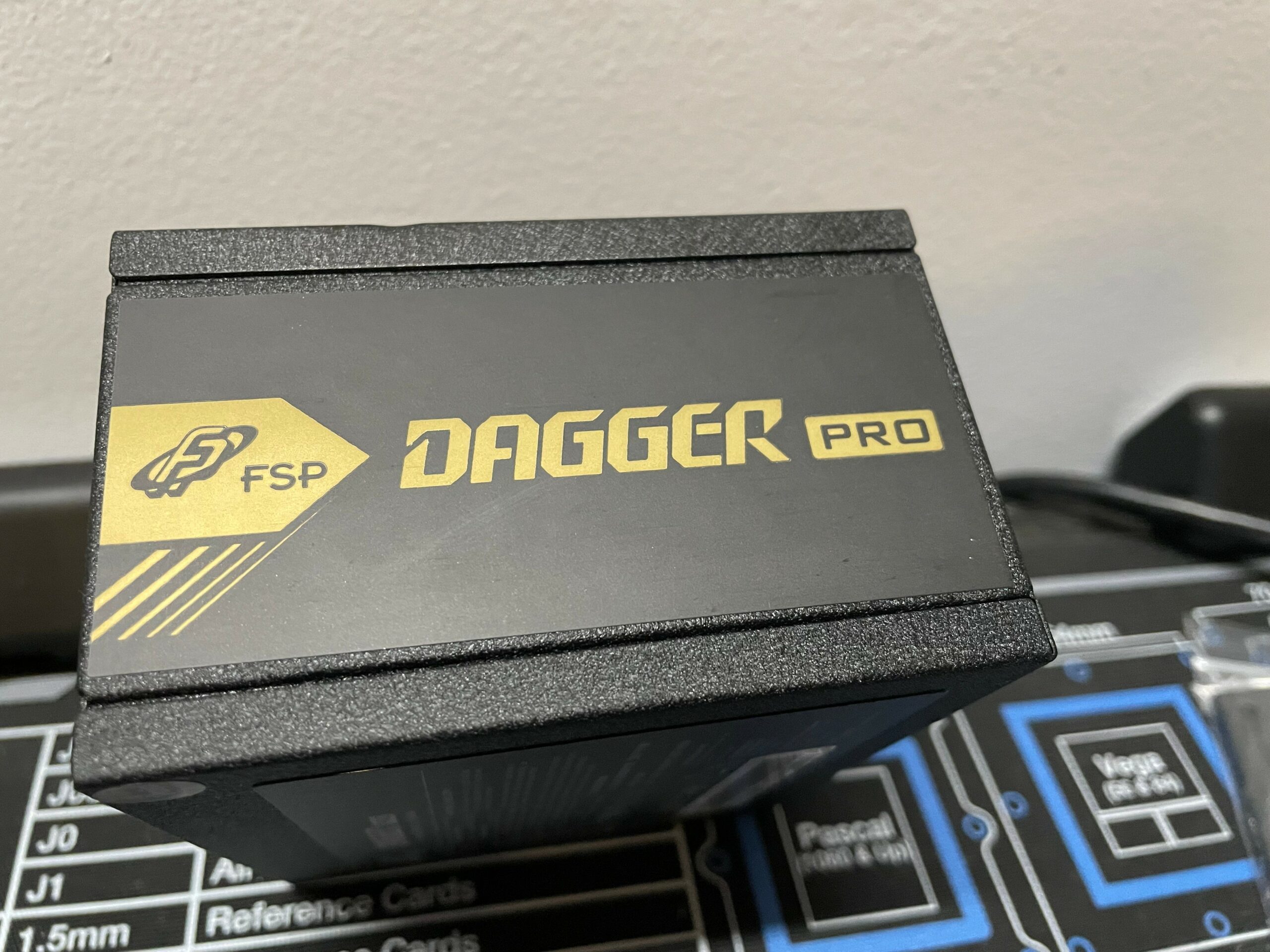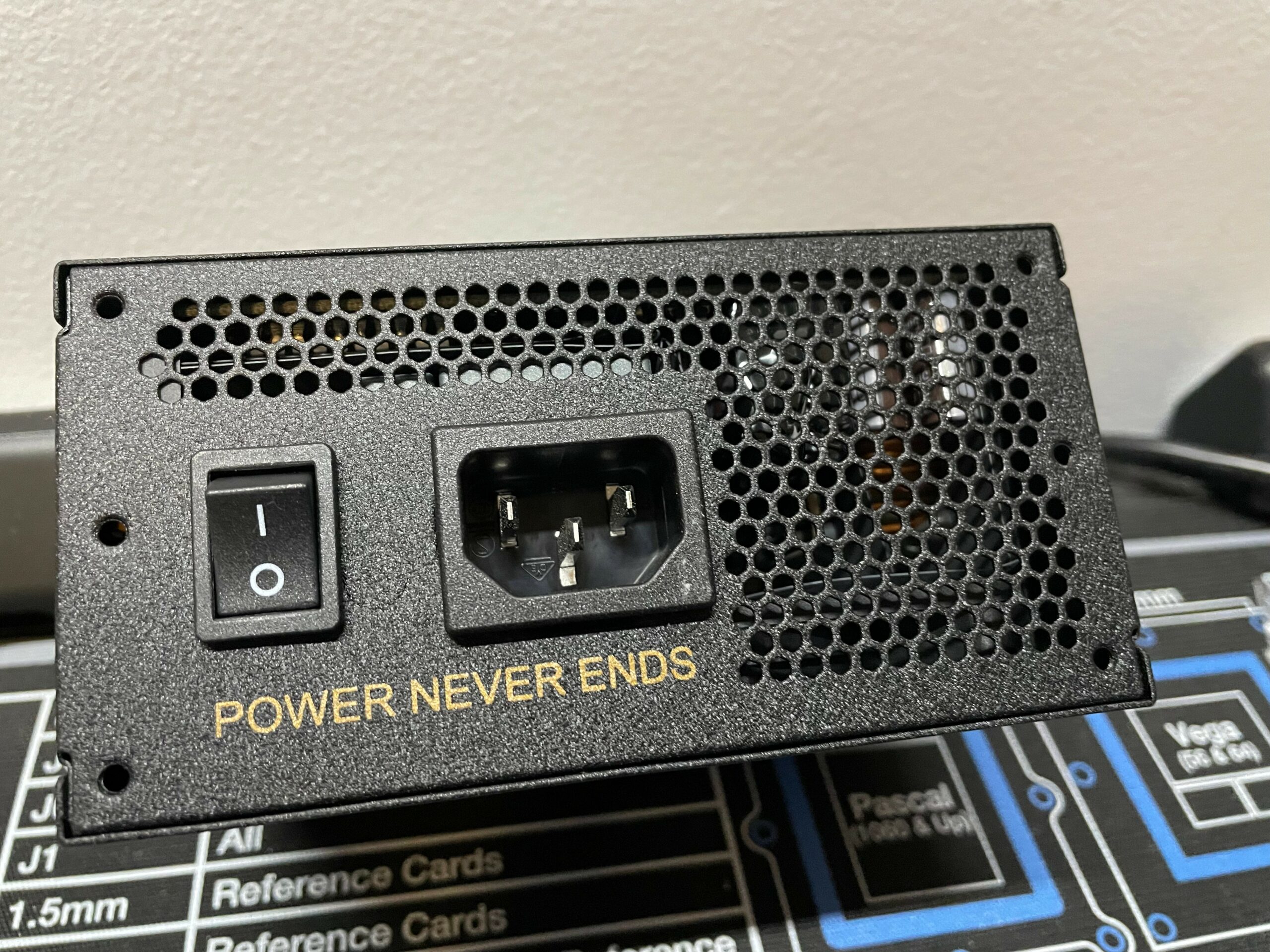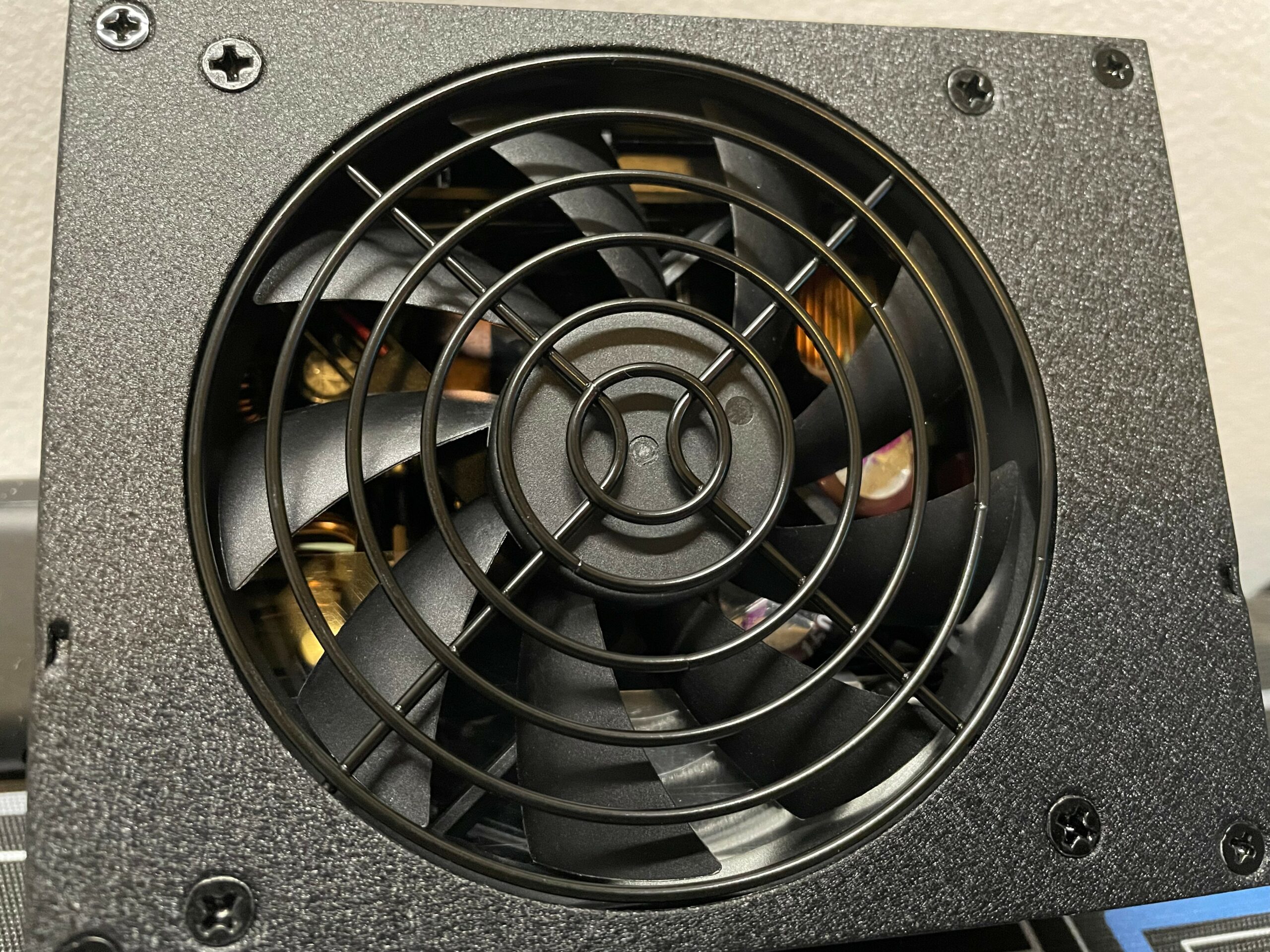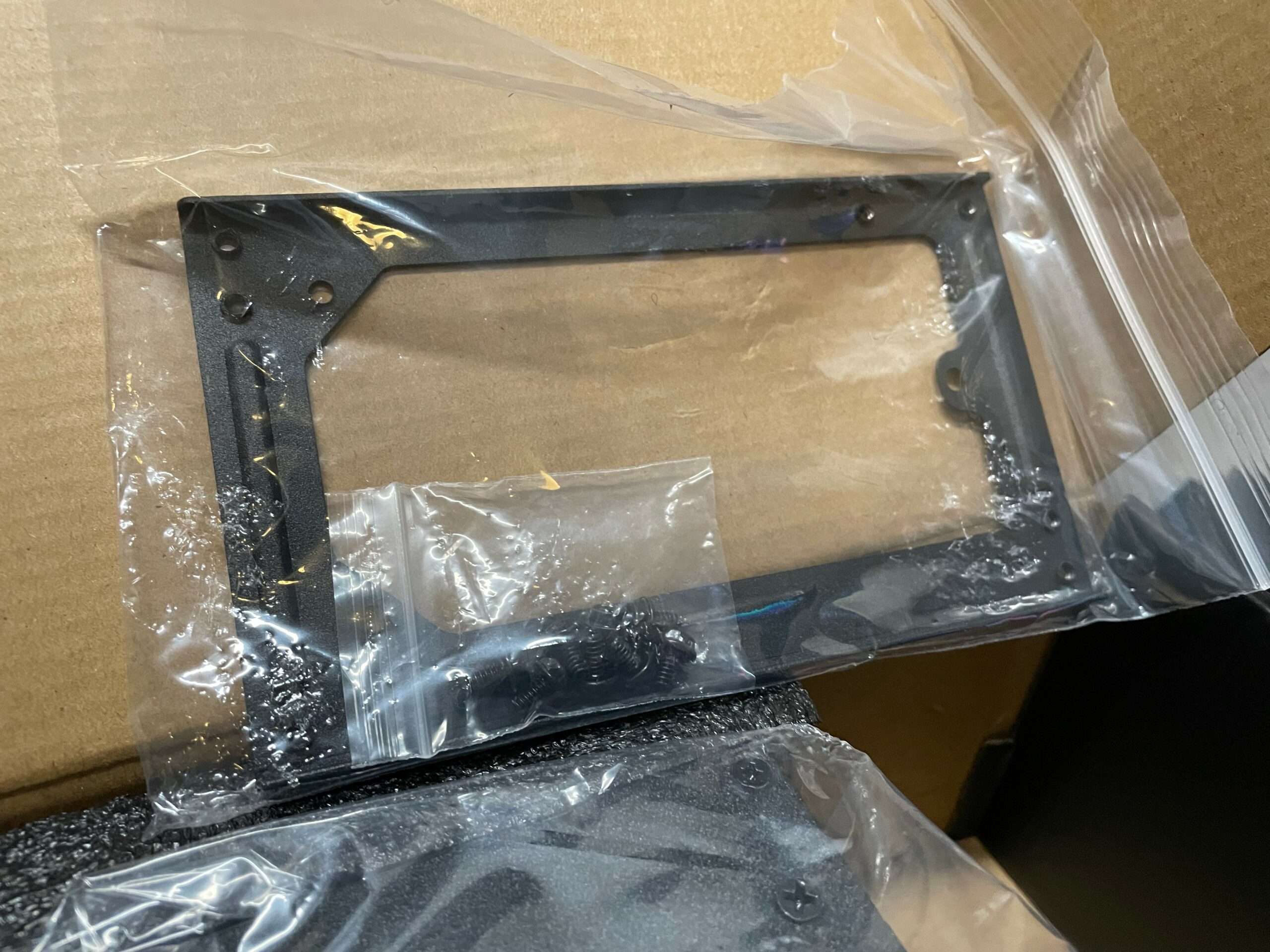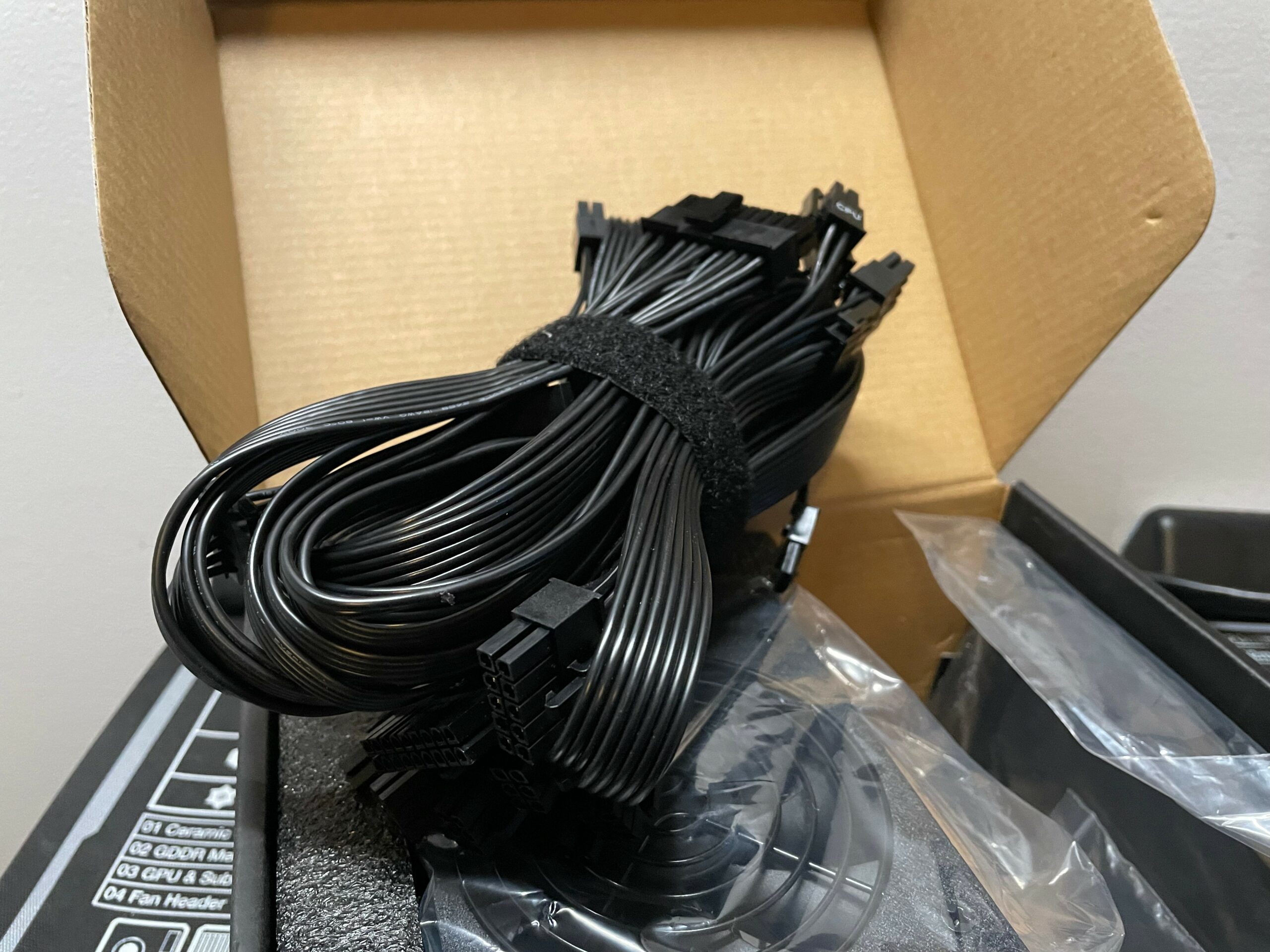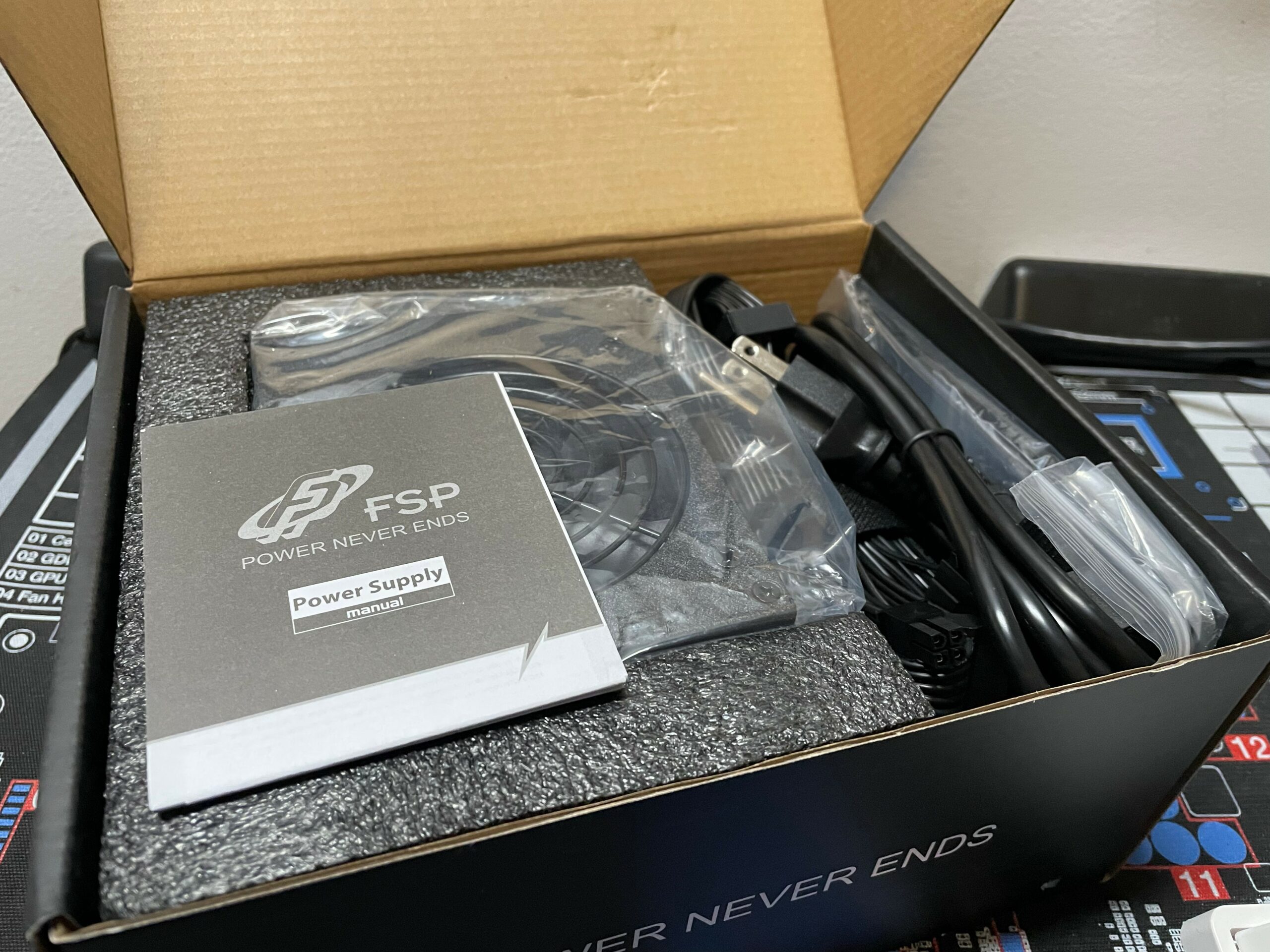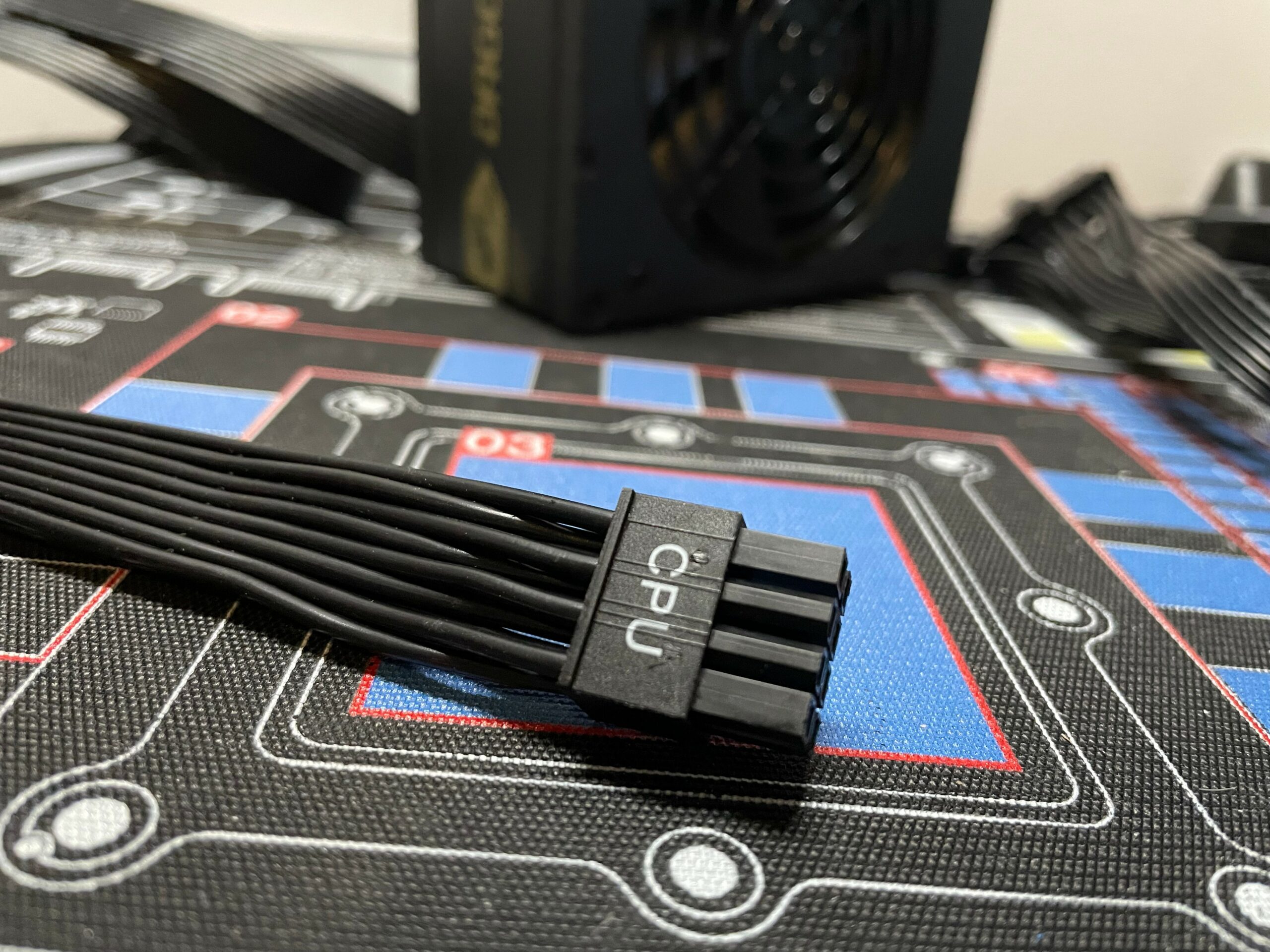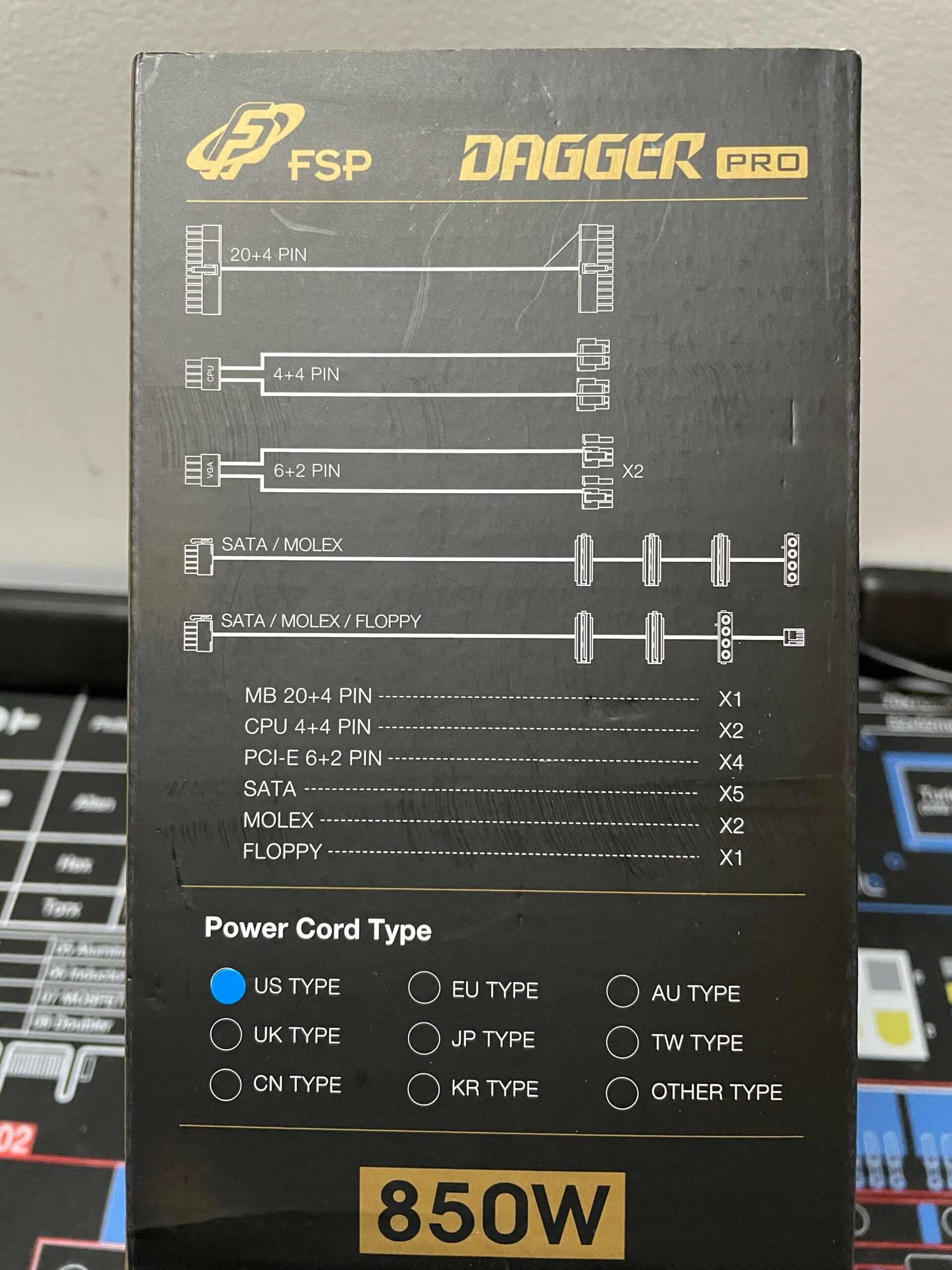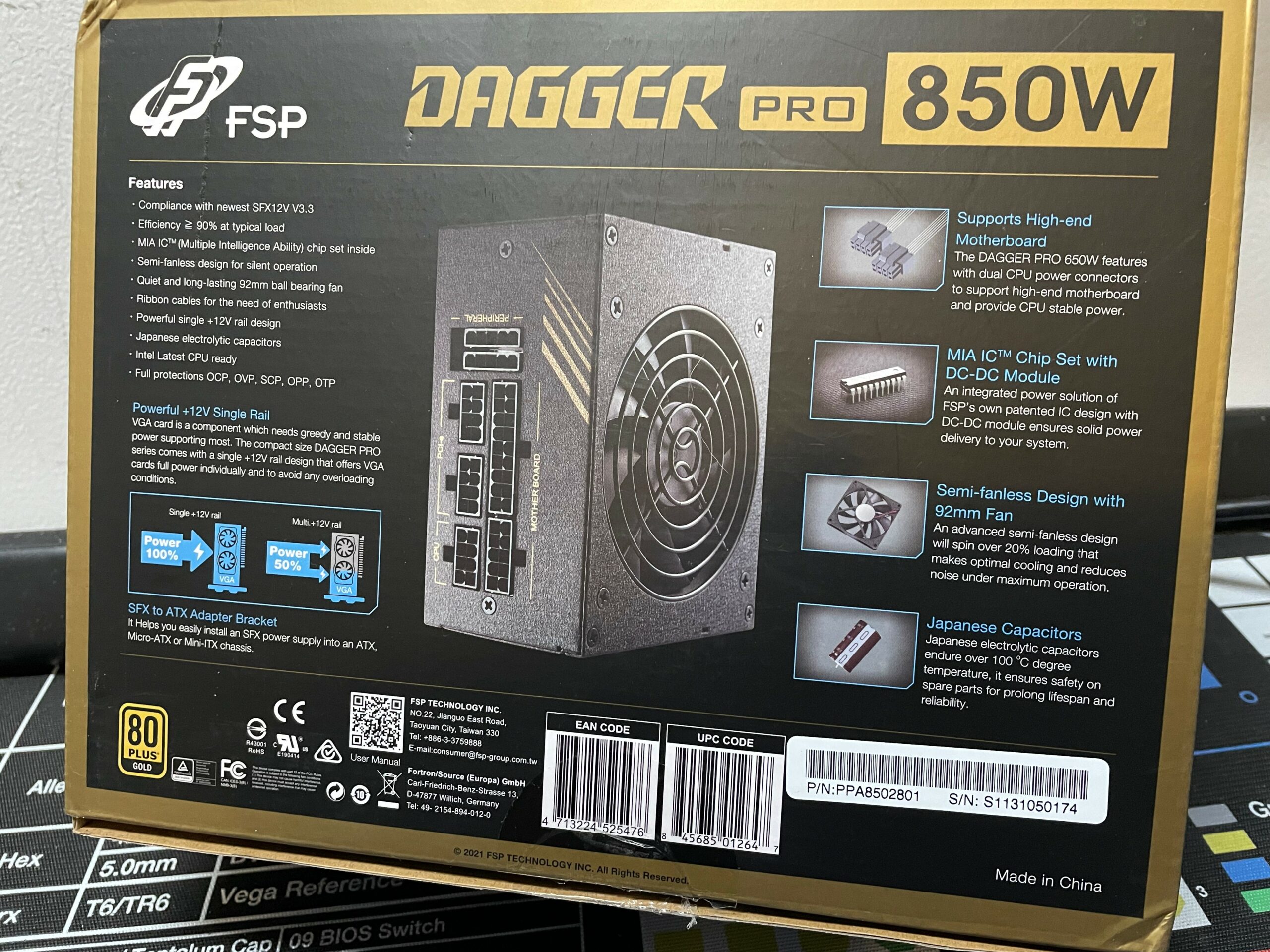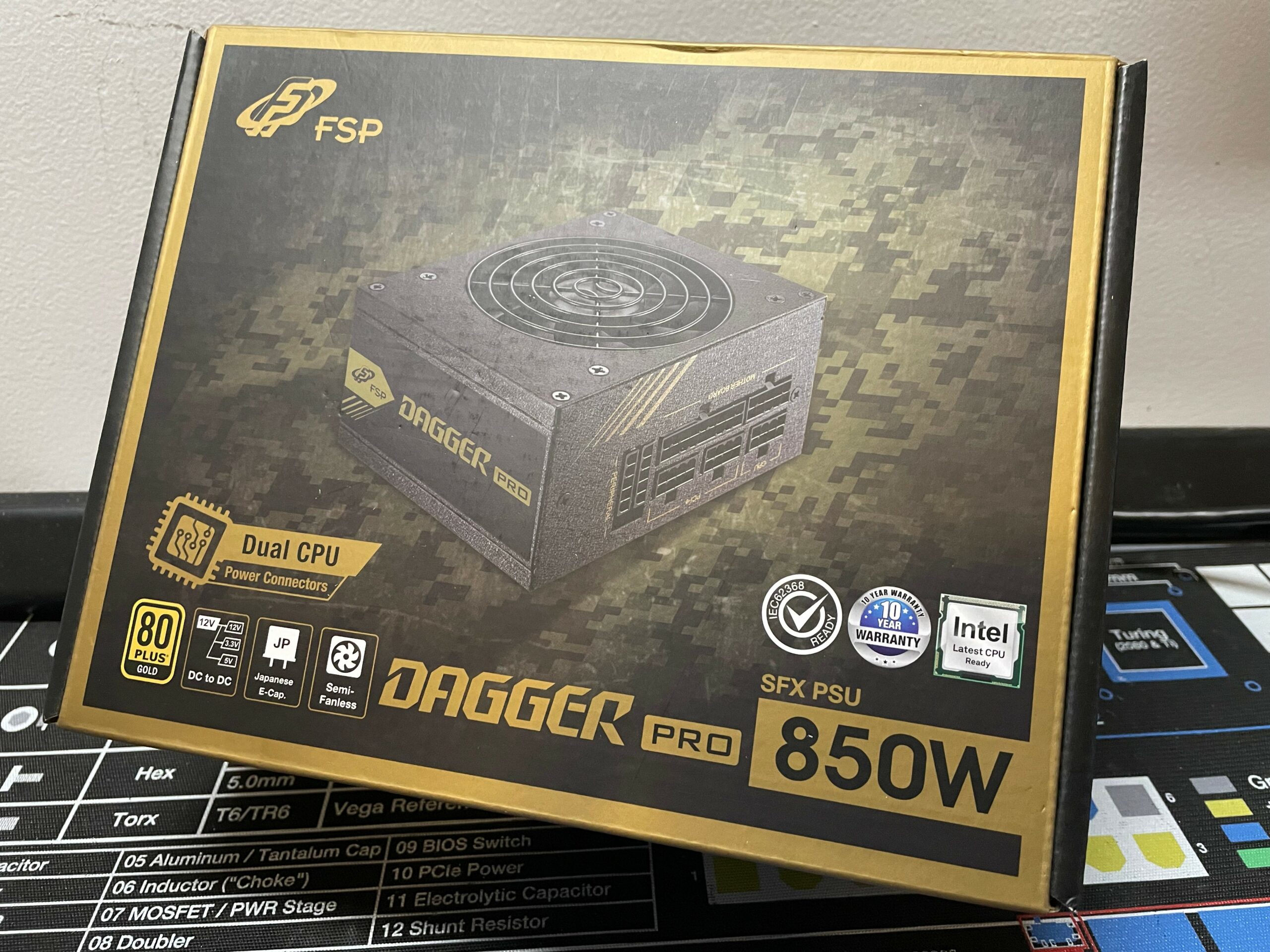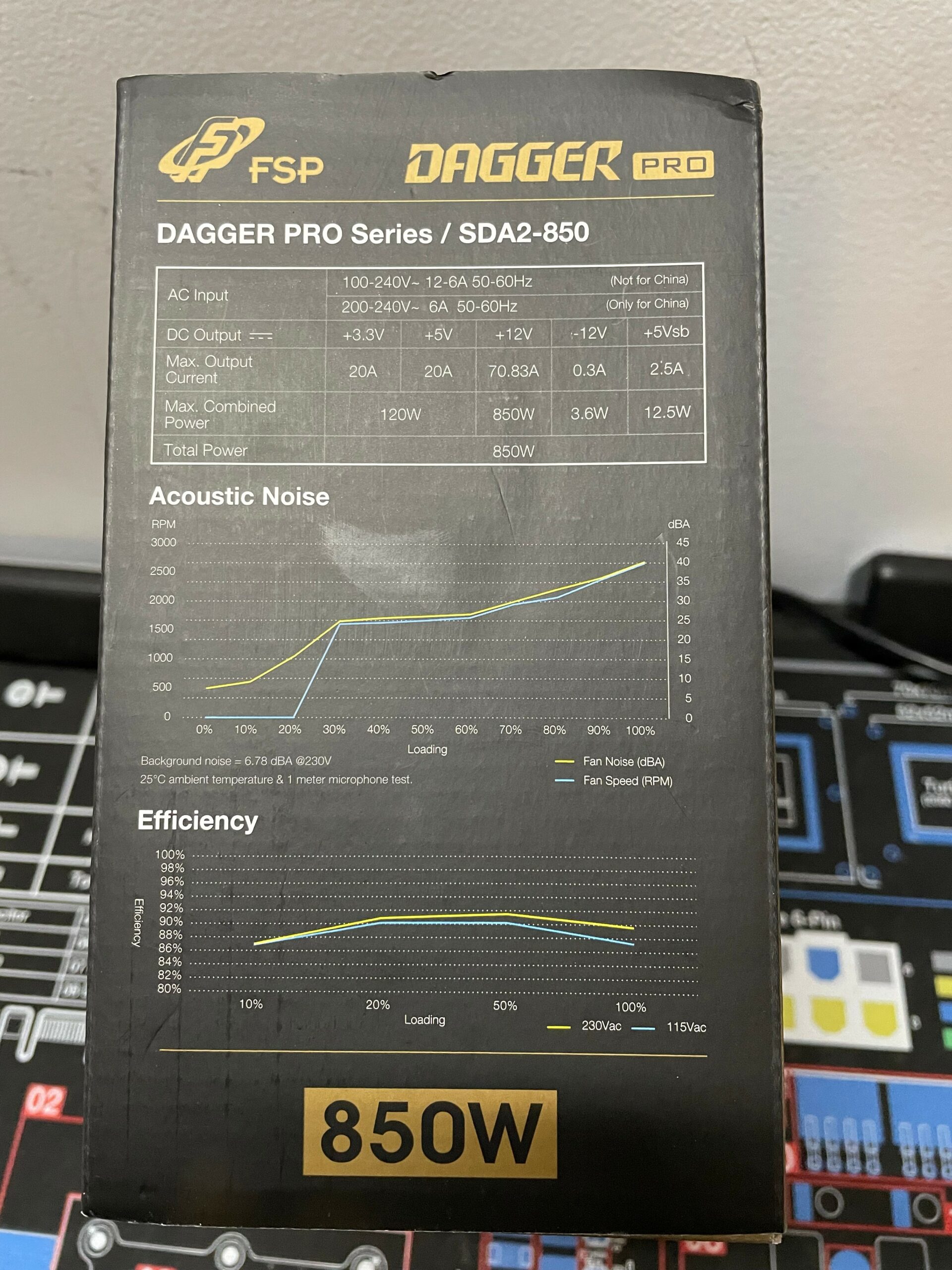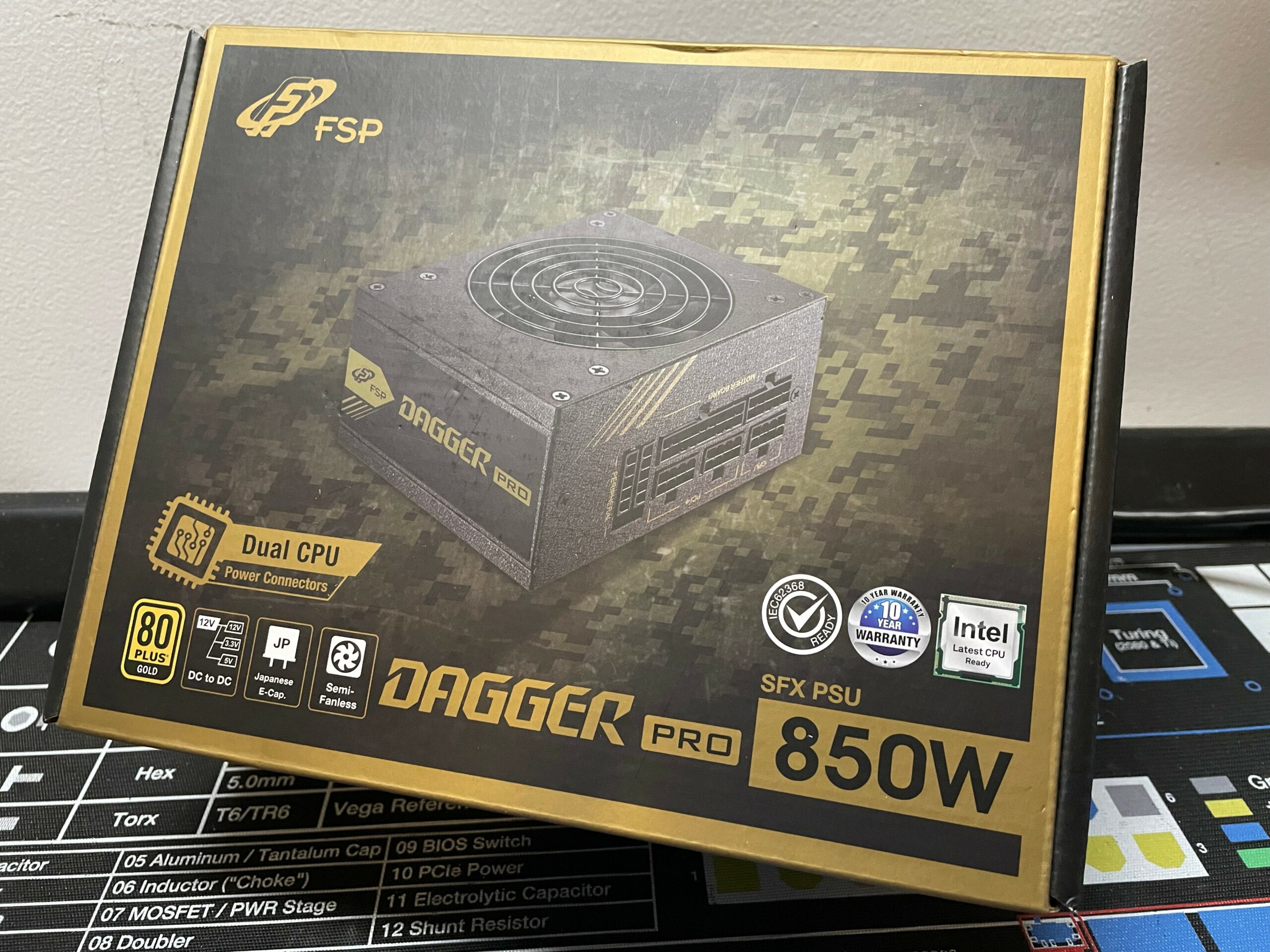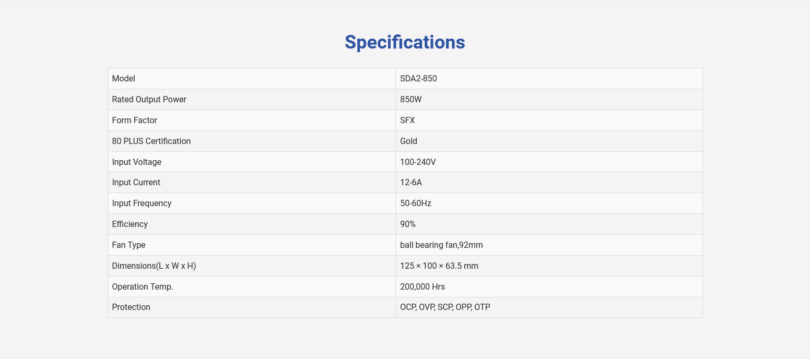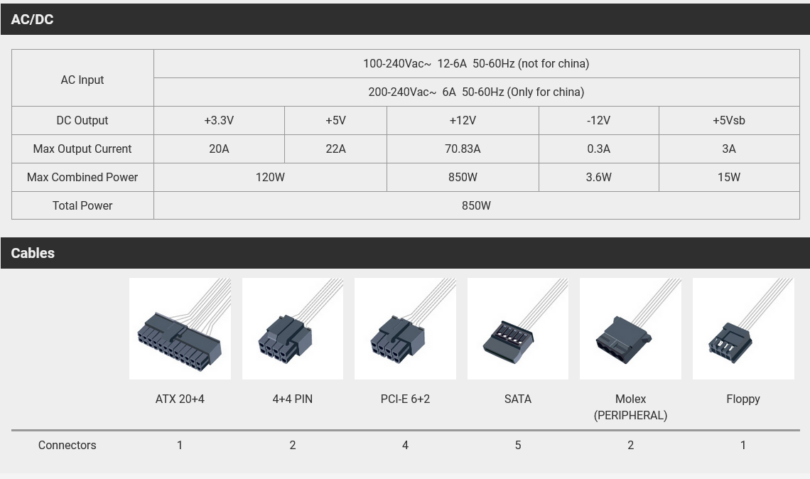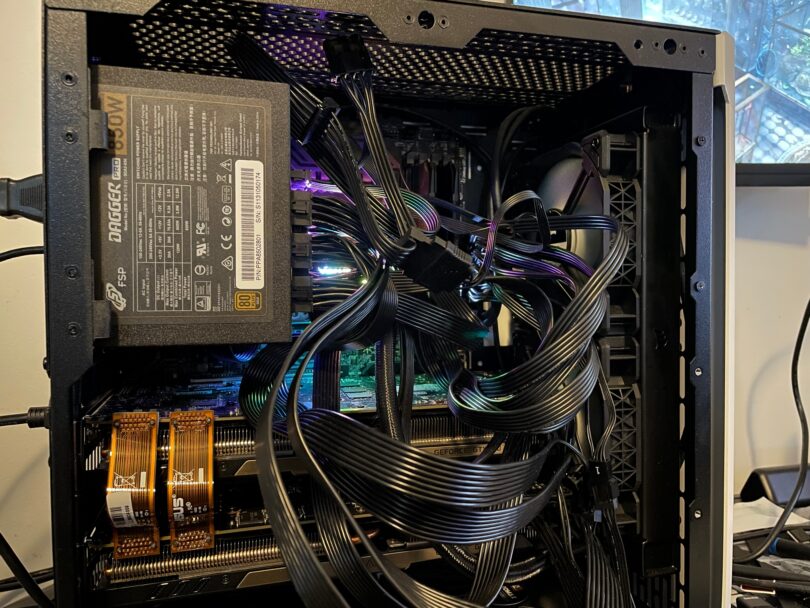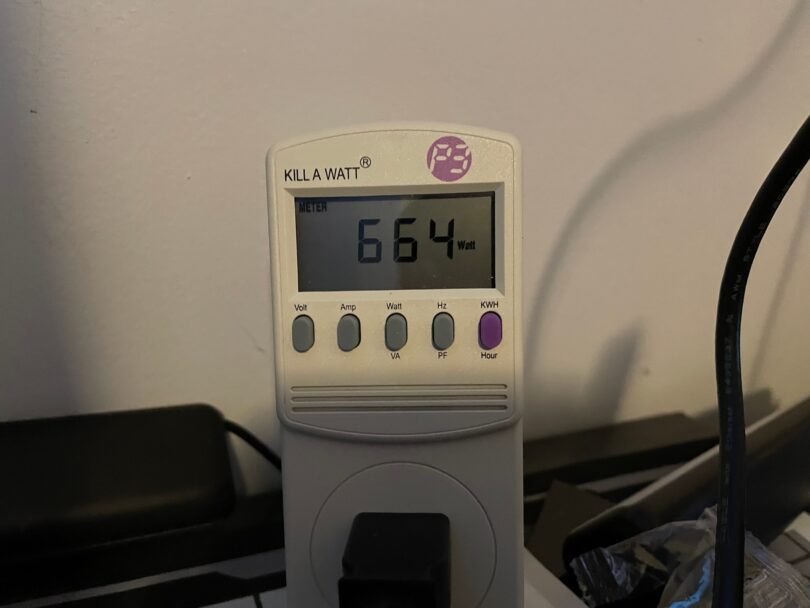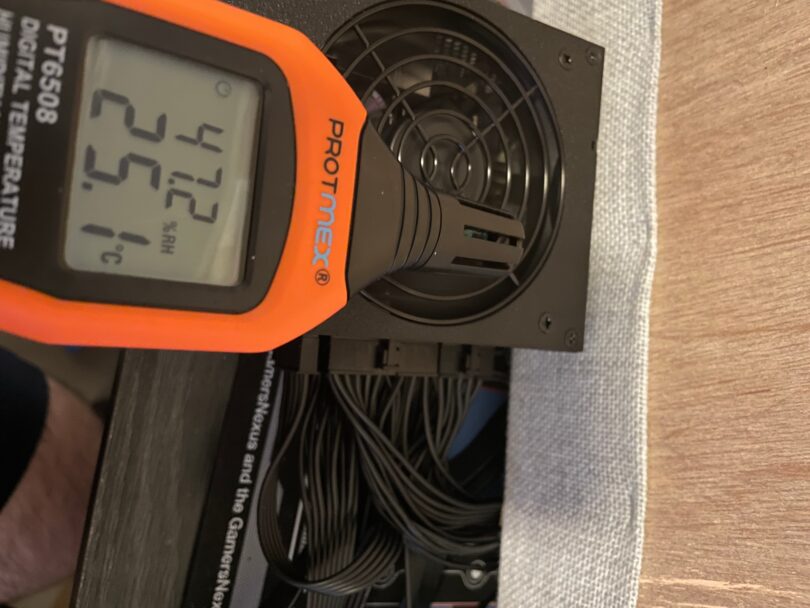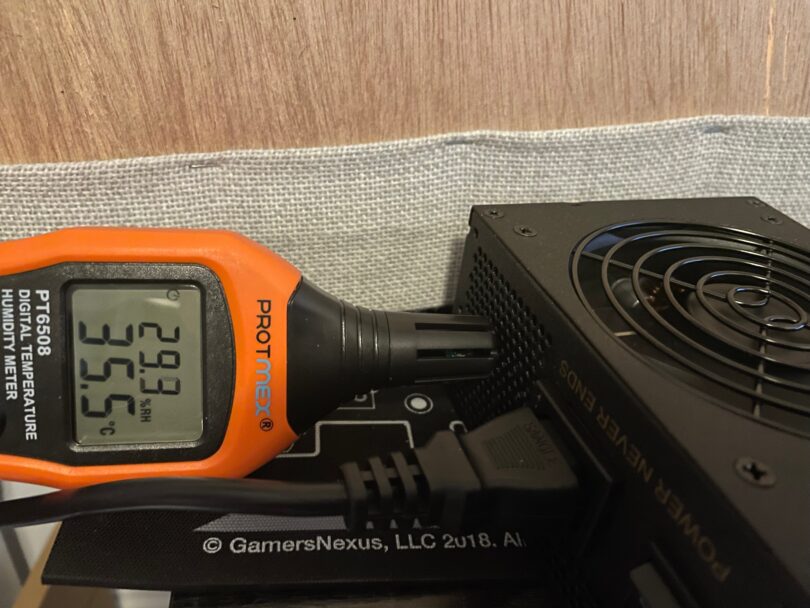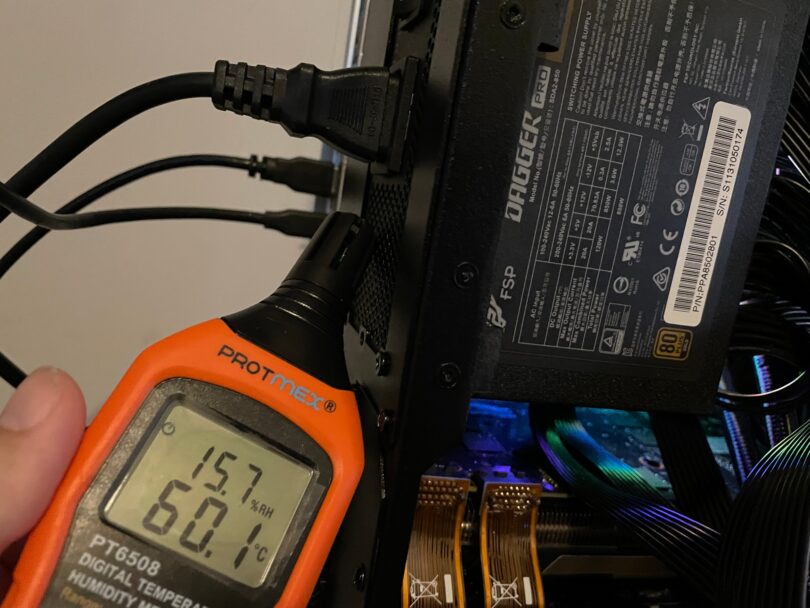I think I might have made our FSP media rep nervous. He was asking when the formal review for the Dagger Pro 850 watt SFX PSU would be online, and I sent him these pictures:
Yeah, I think I made him nervous.
You see, I don’t have much in the way of fancy power supply testing equipment. I can check the voltages and levels, but a multi-thousand dollar calibrated and certified load testing machine is still a bit out of reach for me for now. This means I have to use real computer components, and build up systems designed to push a PSU to and beyond the listed limits. This means I try to basically kill the PSU.
To this end, I’ve built up a Sliger Cerberus X case based system that has already killed more than one PSU. The Cerberus X is a 23.4L ATX case designed by Sliger and our own Playful Phoenix. While I still contend that it should have had room for two 25mm thick top exhaust fans, it is a remarkably capable case that can house a full ATX board, all the cooling you need, and has room for wiring. Using some classic cablegami, you can clean up the wiring nicely for good airflow, and it even offers a ventilated side panel.
…but I don’t do that when I’m testing a PSU. I do this:
This backlash of cables and wires, jammed into a case with no vented side panels and no exhaust other than the PSU, is my PSU torture chamber. I turn the PSU fan inward so that it has to ingest the blistering hot air coming off the MSI X299s VRM heatsinks, while also serving as the only exhaust for both the Intel 7820X 8 Core CPU, and the two GeForce 770s in SLI. I run the cabling like a Dell XPS circa 2000s era desktop, except worse. Then, I overclock everything, and load up days of stress tests.
Furmark and Prime95 Small FFTs at the same time? For 24 hours? That handles the continuous power draw.
LinPack with Furmark? That keeps the CPU load bouncing.
Marathon gaming sessions in Battlefield 4 and 1? That keeps the GPU load moving.
Cinebench for multiple 30 minute sessions. TimeSpy stability test a hundred times. All in a days work.
My power bill getting way too expensive? Name of the game.
Why do I say all this? Simple. The Dagger Pro 850 SFX PSU not only survived our torture tests, but did so while being one of the quietest PSUs I’ve tested. I tried to kill it, but FSP was having none of that.
Before I begin, I want to state that FSP sent SFFN the Dagger Pro 850 for review with no obligations attached. No review notes, guidelines or NDAs, or timelines. They wanted an honest review. This is the correct way for a company to behave, and it speaks well of FSP for doing so.
FSP is not a name most people associate with power supplies. Most people think of companies like SilverStone, Antec, Zalman, or Sparkle. However, the truth is, that FSP has designed and manufactured PSUs for every single one of those companies. They have decades of experience in the OEM market. With the Dagger Pro line, they’ve cut out the middleman, and are now going directly for the SFF enthusiast market.
The specifications of the Dagger Pro 850W reads like a laundry list of good things. You have a custom DC-DC module, dual CPU 8-pin connectors, a single +12V line that put 70.83A, a semi-fanless design, 80 Plus Gold rating, and Japanese capacitors rated for 100C. It’s a good start, so let’s look a few of these in detail.
First there is the simple fact that the PSU can handle 850 Watts. This alone will make SFF enthusiasts do a double take as it opens the door to the highest end GPUs and CPUs. Running a 12900K or 5950X with a RTX 3090 or AMD 6900XT is well within the realm of the Dagger Pro 850, and more and more SFF builders are looking to move beyond the 600 to 750 watt pseudo cap they’ve been stuck in without going to large SFX-L PSUs. At the very least, it gives solid overhead for future upgrades. SFF cases tend to stay in service longer than your average case, with some seeing multiple system rebuilds. Being able to carry forward that power supply and cabling can save a lot of headaches in this process. With CPUs and GPUs getting more power hungry with each generation, a lot of the older “it’s fine” 600 watt units are no longer fine.
Next you have the dual CPU 8-pin connectors. The dual CPU 8-pin connectors, while not needed for most CPUs, can become necessary for higher powered units. I’ve pulled 330 watts from a lightly overclocked Intel i9-12900K and that is pushing up against the limit of a single 8-pin EPS line.The dual connectors give you the chance too either get into heavier overclocking, or start looking at even more powerful CPUs if not now, then in the future.
However, there is a caveat to this: The Dual 8-pin units only connect to a single 8-pin header on the PSU itself. True dual units should have their own separate connections. While it’s unlikely the average SFF user will have this issue, it still needs to be mentioned as it can limit power.
This brings me to a gripe I have with the Dagger Pro 850: the cable quality. FSP included industry standard black, plastic clad, stiff, long, flat cables with Dagger Pro. They aren’t nice to work with, and require a lot more planning than flexible braided cables like those of the Corsair platinum series. To be fair to FSP, they aren’t the only company doing this. However, Corsair really raised the bar of what cables we should expect for this price point, and FSP needs to meet that bar. While I always encourage custom cables in a SFF build, at least with soft braided cables it’s not a necessity. Additionally, finding custom cables for the Dagger Pro is more difficult due to the cable connector design. They’re out there, but you can’t just go to CableMod and order a set.
The 92mm cooling fan runs semi-fanless, and it’s one of the high points of the Dagger Pro 850’s build, and almost redeems it after the cables. The back of the box says it requires a 20% load to spin up, however in my testing it seemed to be temperature based. When I loaded up the system and pulled over 600 watts from the wall, it took a little over a minute for the fan to start spinning. When it started up, it was the quietest fan in the system. There was no bearing noise, and the fan wasn’t audible over the Corsair 240mm AIO set to quiet mode. The Dagger Pro 850 isn’t going to be a power supply that burdens your ears with buzzy fan noise at the slightest load. After having listened to several other PSUs lately that had either poor fan ramps, coil whine, or bearing click, the Dagger Pro 850 was a welcome relief.
However, this quiet fan implementation is going to require clean air flow. On an open test bench, while pulling 650 watts from the wall, the Dagger Pro 850 had very good temperatures. The intake air temperature was 25.1 C while the exhaust temperature was 35.5C leaving only a 10.4C degree delta. The cooling fan was still too quiet to measure over the other components, and the Dagger Pro’s housing was merely warm to the touch.
When I put the unit into our torture box, it was a different story. The system had the same intake temp, but the Dagger Pro 850 was now bathed in the heat of the VRM and GPU/CPU exhaust. The exhaust temperature hit 60.1C , and the housing was too hot to touch. The fan was spinning notably faster than on the open test bench, but it simply wasn’t fast enough to clear the heat. Noise was still very low, and inaudible over the GPUs and CPU-AIO. Here is where I want to see more airflow from the stock fan. There’s no denying I put the Dagger Pro into an engineered worst case scenario, but it’s still quite plausible in the real world of SFF. By the time new builders get to the cabling, a lot of them are so burnt out that they just cram the cables in, and try not to block any fans from spinning.
The rest of the story is good. The unit had no issue giving the appropriate voltages on its lines, and comes in a nice matte black with muted gold chassis. It’s a timeless, classic color combo that won’t draw attention away from other components if that’s what you want in your build. The fan guard is a semi-glossy black as are the screws. There is a warranty is void stick if removed sticker on one of the screws which is not applicable to the US market, and companies need to stop putting these on products. The warranty itself is 10 years long, and I’ve observed FSP reps actively contacting customers who post negative reviews to assist them.
Final Thoughts
There is a lot of competition in the SFX market now, and the $191 that the Dagger Pro 850 is selling for at the time of writing for on Amazon ($179 on New Egg) won’t help its value argument. Inevitably, the Dagger Pro 850 is going to be cross shopped a lot, and there are a lot of compelling options out there that compete with it. Where the Dagger Pro 850 is really going to find a strong foothold is for users who want both quiet performance while using high powered PC parts, or simply don’t care about the stock cables.
The Dagger Pro 850 simply isn’t a PSU that is going to get on your nerves while your using it. You won’t worry about the noise or power. At 850 Watts, it has enough power to run any GPU currently sold, and can power the latest CPUs without issue. Pushing those CPUs and GPUs to their limit won’t punish your sense of hearing either. By the time the fan spins up, your other components are already louder. There was no bearing click, and no coil whine. Power supplies can very from unit to unit, but it’s been the first high power PSU I’ve tested in quite a while that was just simply quiet, and faded into the background. For me, that alone is worth spending some extra money. There is nothing worse than having an amazing build ruined by an irritating noise your simply can’t get rid of.
But then there are those cables. They aren’t good, though FSP isn’t alone in this. If you’re building a space constrained SFF rig (and really who isn’t?), you’re going to have to get some custom cables made. If you have a larger SFF case such as a NZXT H210 or Phanteks Enthoo Evolv Shift than the cables will probably work fine. If you want to cram this unit into a Thorzone Mjolner, Meshlicious, or NCASE M1, then the cables will be an issue.
The bottom line is that the Dagger Pro 850 is a PSU that delivers quiet, high-power performance reliably. It is pricy in the face of competition, and the cables are a completely missed opportunity for FSP, but FSP is on the right track for the early entries into the SFX market.
Would I recommend this PSU? Yes. The Dagger Pro 850 should be on your PSU short list to review for your build.

